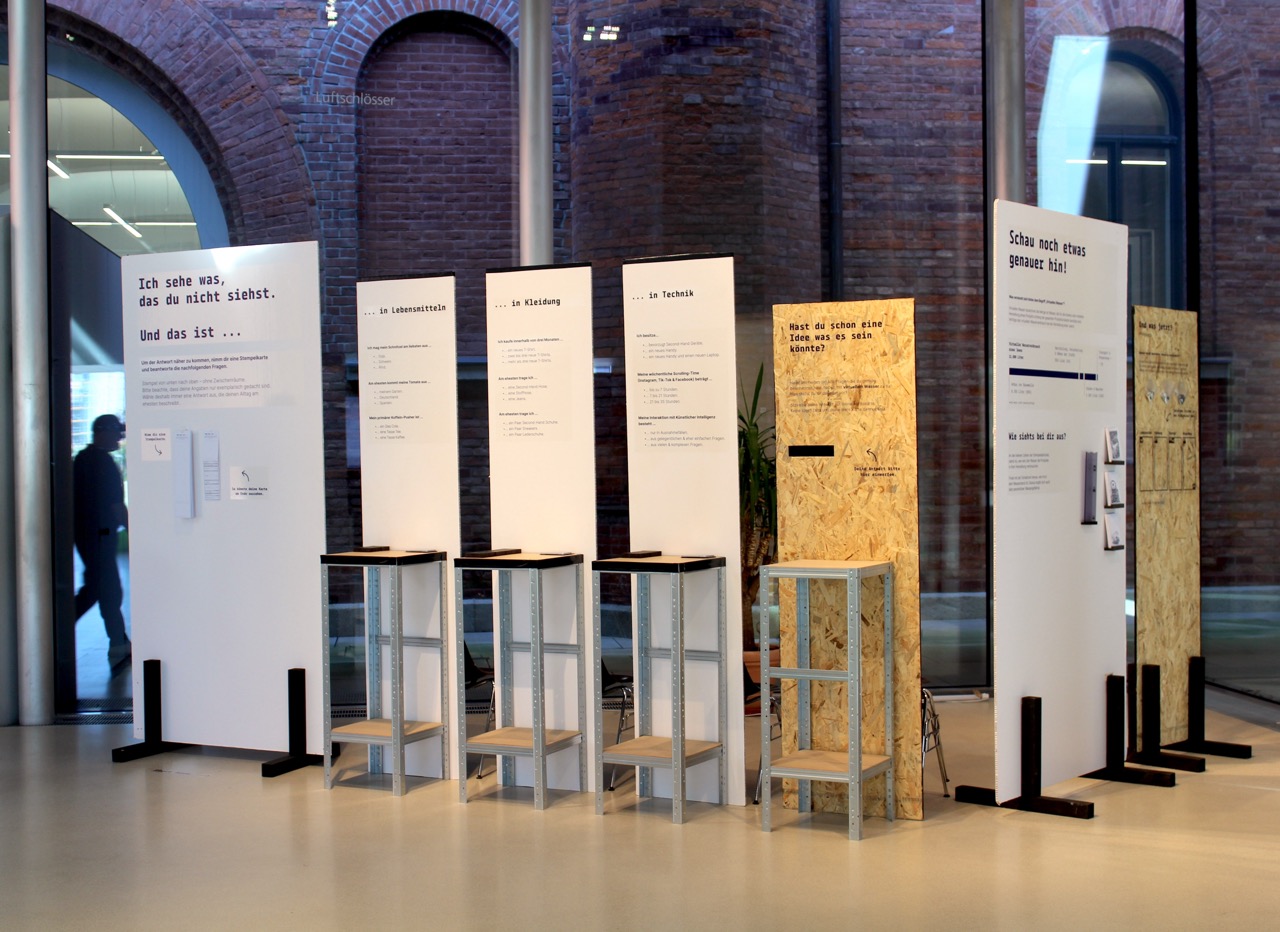
Making virtual water visible.

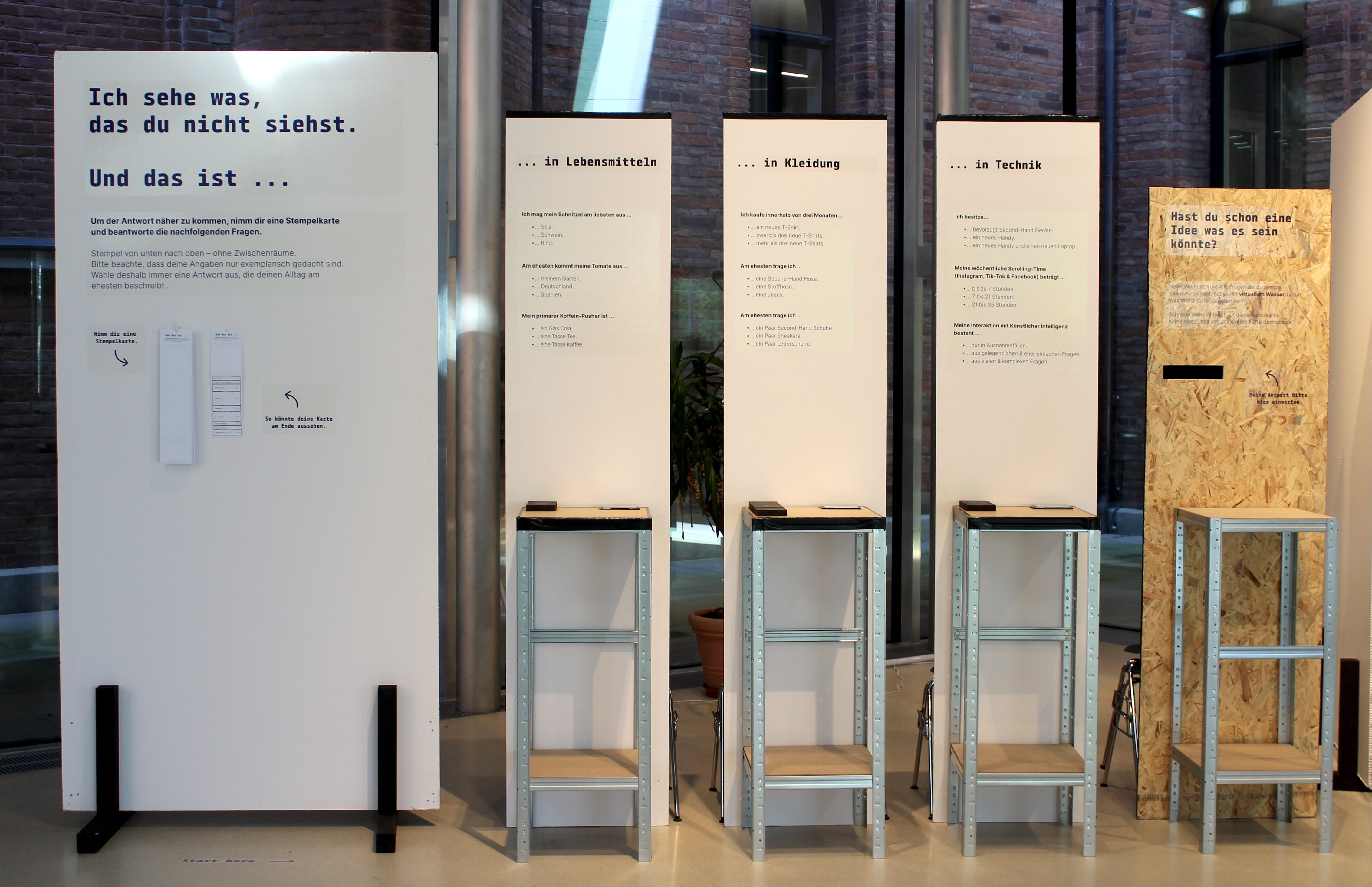
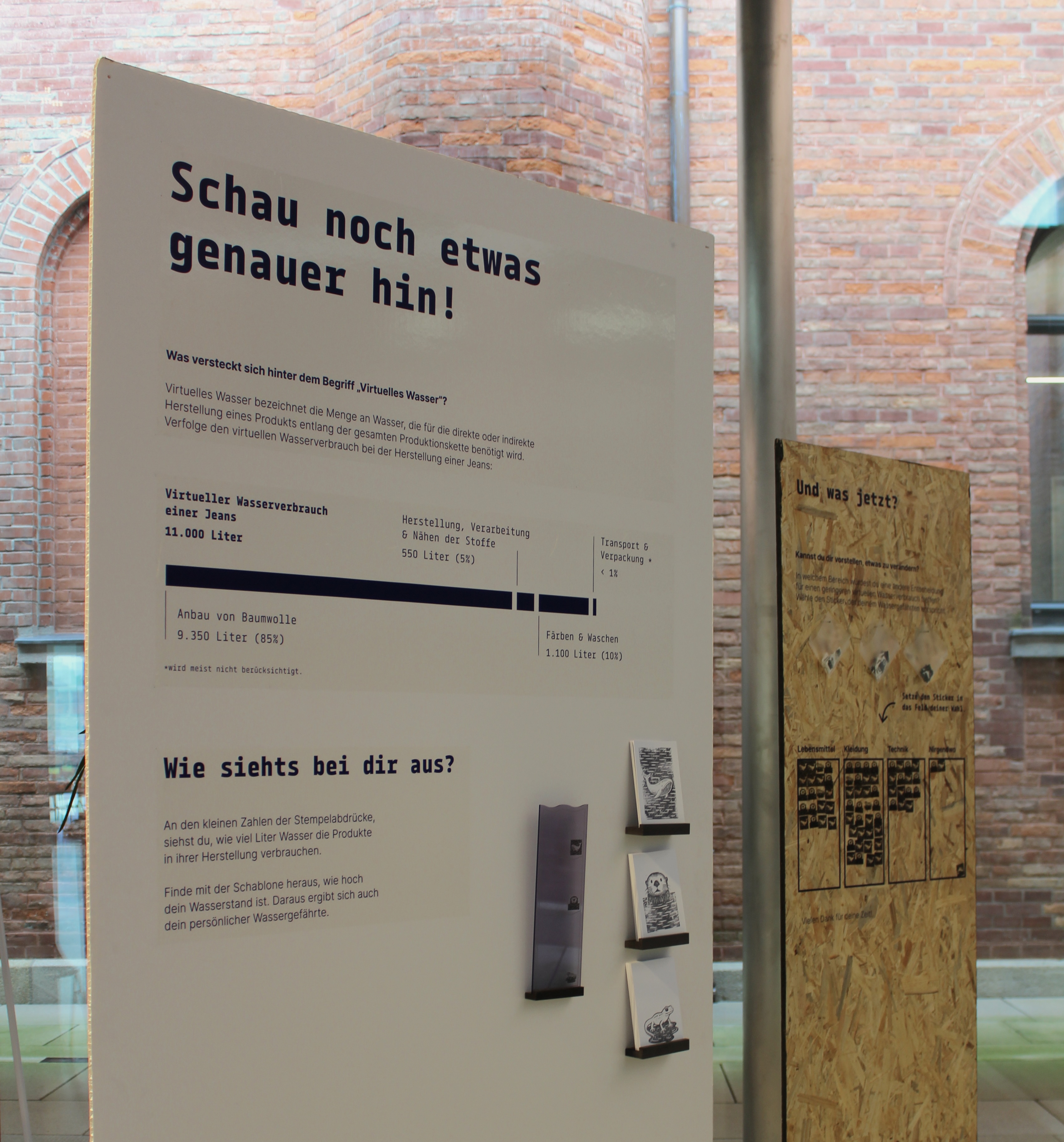
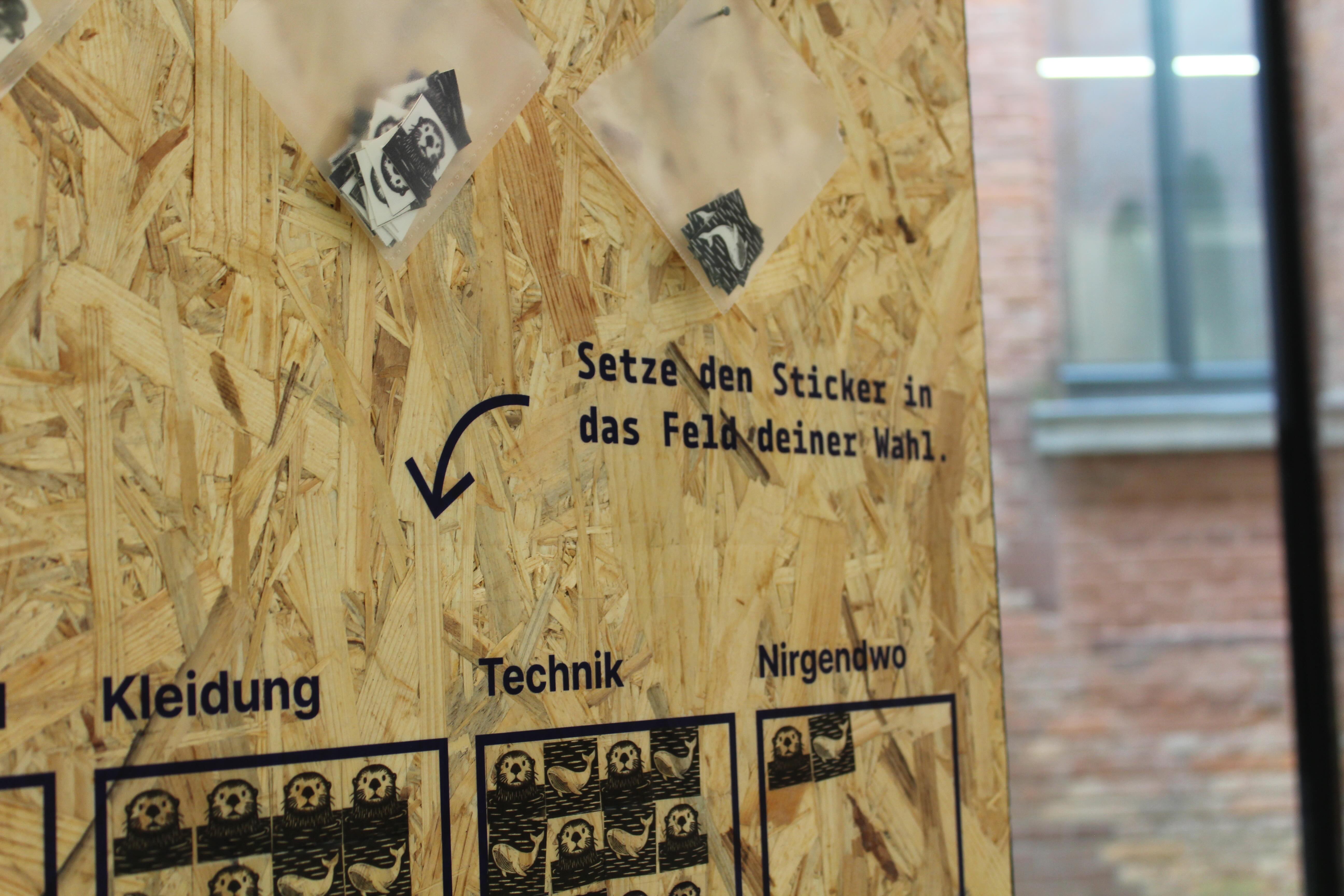
Medium
An exploratory, interactive exhibition format was deliberately chosen, as it enables both the participants to gain insights and the researchers to conduct in-depth observation and analysis. The aim was not only to convey information, but also to create a participatory, experience-based engagement with the topic of virtual water consumption. In other words, to generate awareness that is both cognitive and emotional. The exhibition is divided into four consecutive phases, which were coordinated in terms of both function and content.

The first and second Phase
Participants’ current consumption in the three everyday-relevant areas of food, clothing, and technology—each with varying virtual water impacts—was surveyed. Each category included three questions with three answer options, designed based on the average water consumption of consumer goods during production. A stamp system made each choice visible, showing differences in size and indicating the exact litres of water used, which allowed for the collection of individual virtual water footprints. The second step assessed participants’ prior knowledge of virtual water, both gathering information and providing a clear definition to establish a common understanding, which served as a foundation for subsequent reflection and learning.

The third Phase
Depending on their water balance, participants are now assigned one of three water companions: the whale for decisions with high virtual water consumption, the otter for medium consumption, or the newt for low consumption. This narrative assignment aims to make the collected data emotionally and visually tangible. It opens up a moment of self-reflection, without moralising undertones, but rather through the playful, symbolic representation of one's own consumption patterns.

The forth Phase
Finally, it is assessed whether the examination of one's own consumption behaviour and the newly acquired information triggers a willingness to change. Participants were able to indicate whether and in which area they could imagine adjusting their behaviour, be it in the area of food, clothing, technology or not at all. This phase deliberately aimed to appeal to the emotions, but without pressure, rather in the sense of personal reflection on one's own role in the larger context of global resource distribution.

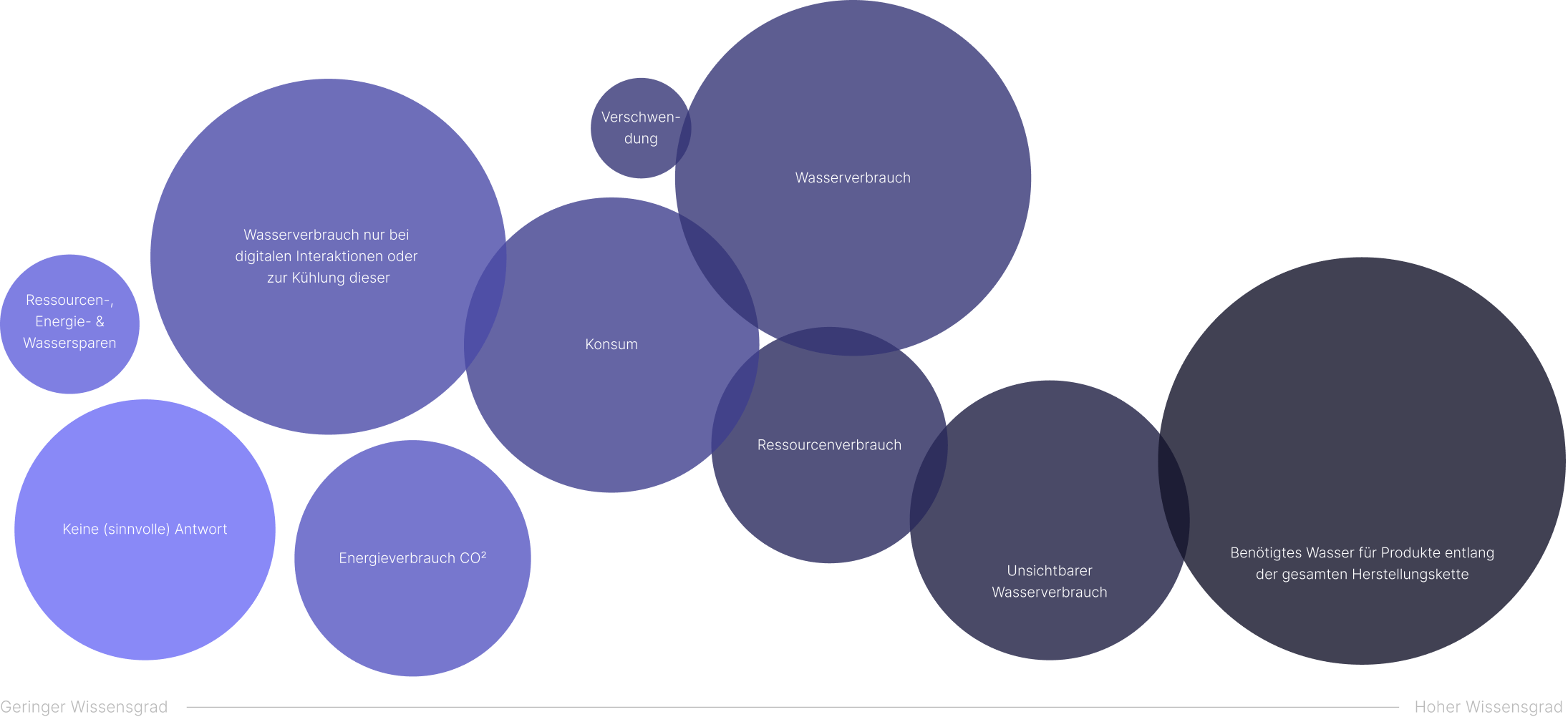
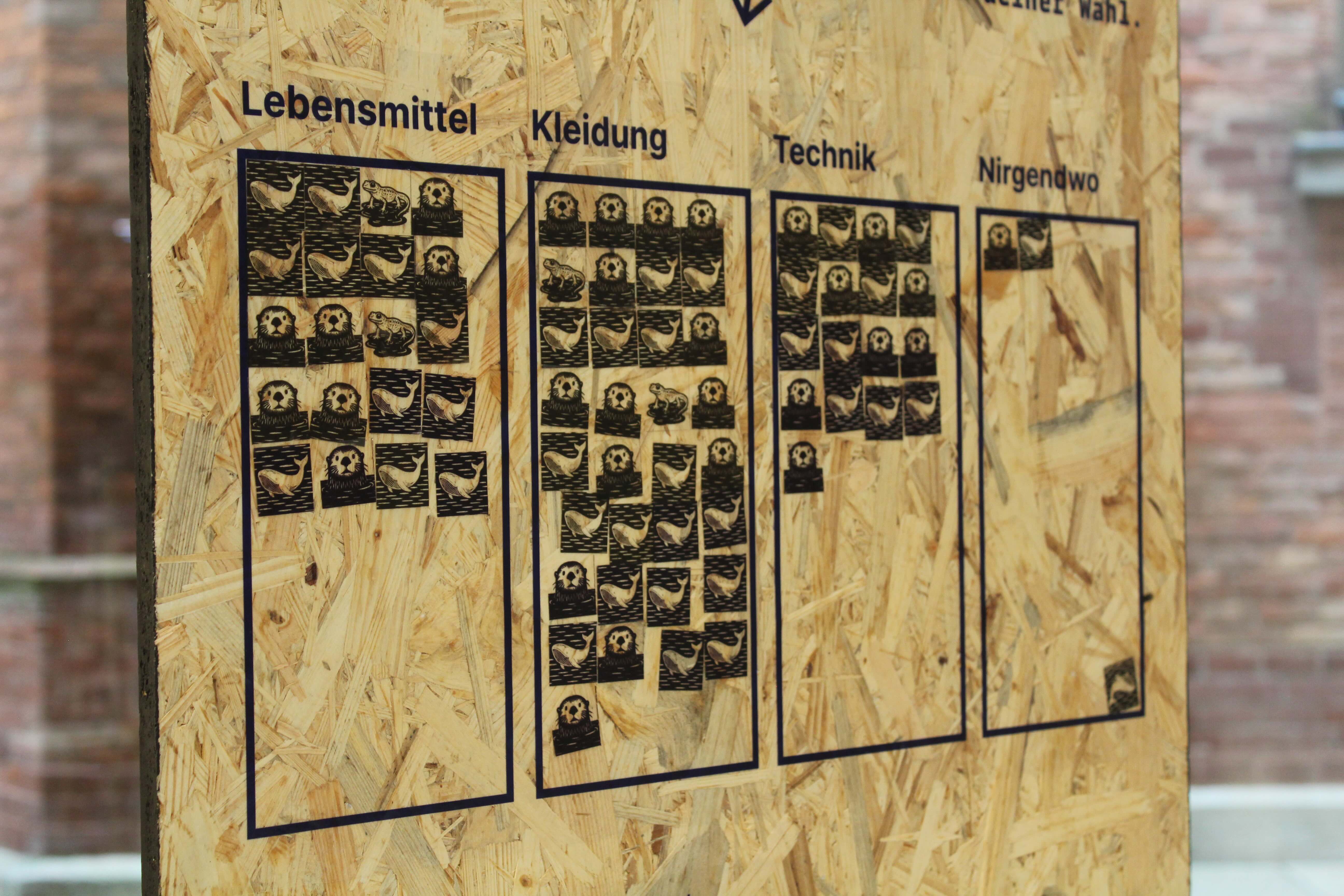
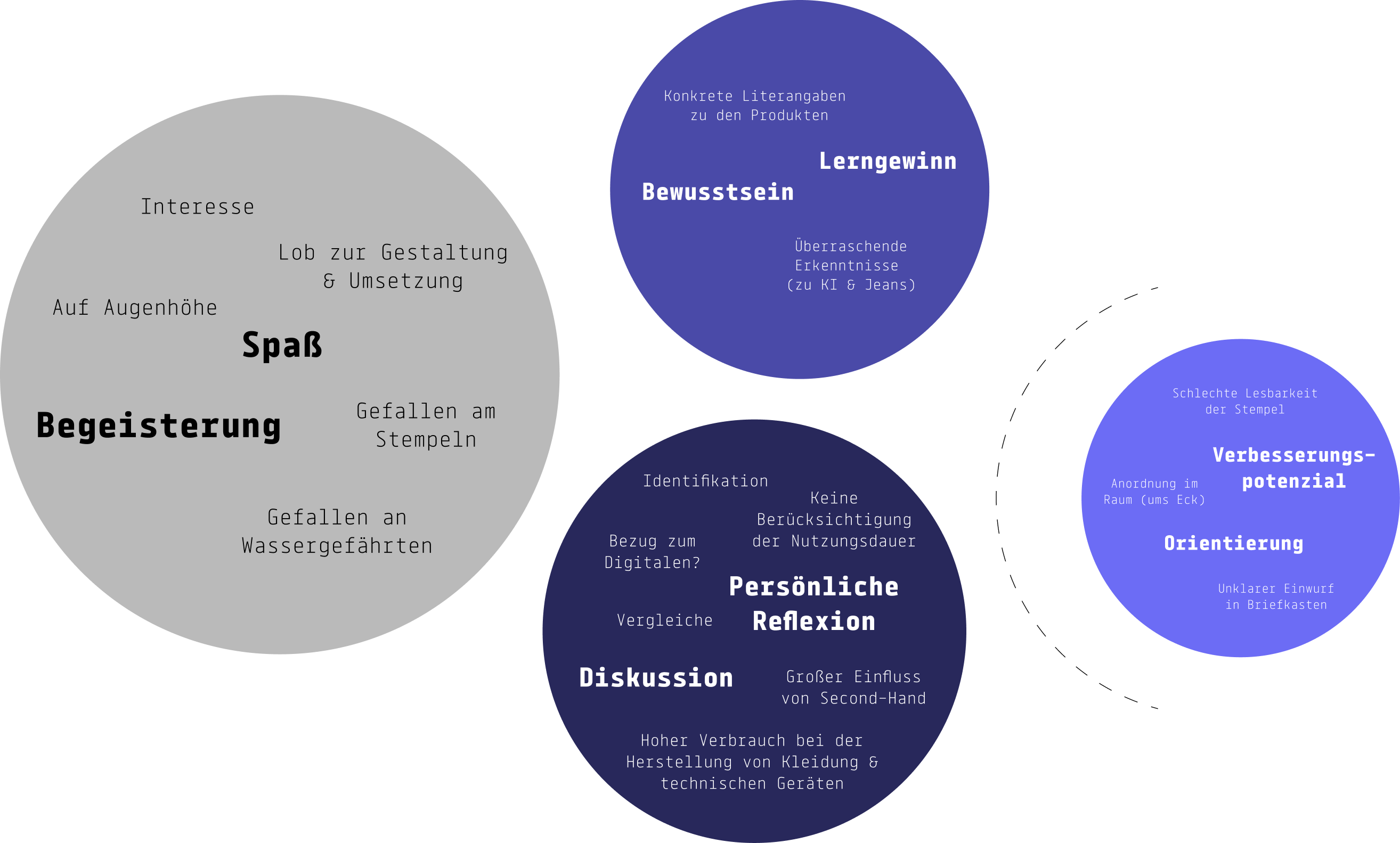
Results Awareness
In the second phase, participants’ responses on virtual water were evaluated during a three-day survey at Munich University of Applied Sciences. The analysis showed widely varying knowledge, mostly low to medium. Some gave no answer or mentioned unrelated issues like energy use, while others referred to digital water use, server cooling, or hidden consumption. A few participants defined virtual water accurately. Overall, the results reveal a clear need for further education and confirm the exhibition’s potential to raise awareness and understanding of virtual water.

Consumer Decisions
The evaluation of 61 stamp cards showed predominantly high virtual water consumption. Most participants were classified with the companion Whale, fewer with Otters, and only very few with Newts. Across food, clothing, and technology, individual choices strongly influenced the overall footprint. A clear step pattern emerged: Whales chose high-consumption options, Otters mixed ones, and Newts consistently resource-saving ones. Highlighting both the impact of single decisions and the potential for change.

Willingness to change Behaviour
The final phase explored whether participants were willing to change their consumption habits after reflecting on virtual water use. Among 73 responses, a clear majority expressed readiness to adapt their behavior: 45 % aimed to change clothing choices, 27 % food habits, and 23 % technology use, while only 4 % planned no change. These trends were consistent across all water-companion groups, indicating that self-reflection occurred largely independent of previous classifications. Notably, the few Newts focused solely on clothing and food changes, showing no interest in technology or in maintaining current habits. Overall, the results suggest that the experience not only raised awareness but also inspired many participants to consider lasting behavioral change.

Participatory Observation
Participant observation showed that visitors valued the playful stamp method and charming water companions, describing the exhibition as fun and easy to engage with. Concrete water-use figures sparked “aha” moments, raising awareness of virtual water, especially the high impact of clothing and tech, and encouraging reflection on consumption, second-hand use, and product longevity. Conversations emerged without moral pressure. Suggested improvements included clearer stamp-card instructions, a more intuitive layout, and fresher stamp ink. Overall, the exhibition successfully combined enjoyable interaction with meaningful learning and discussion.


